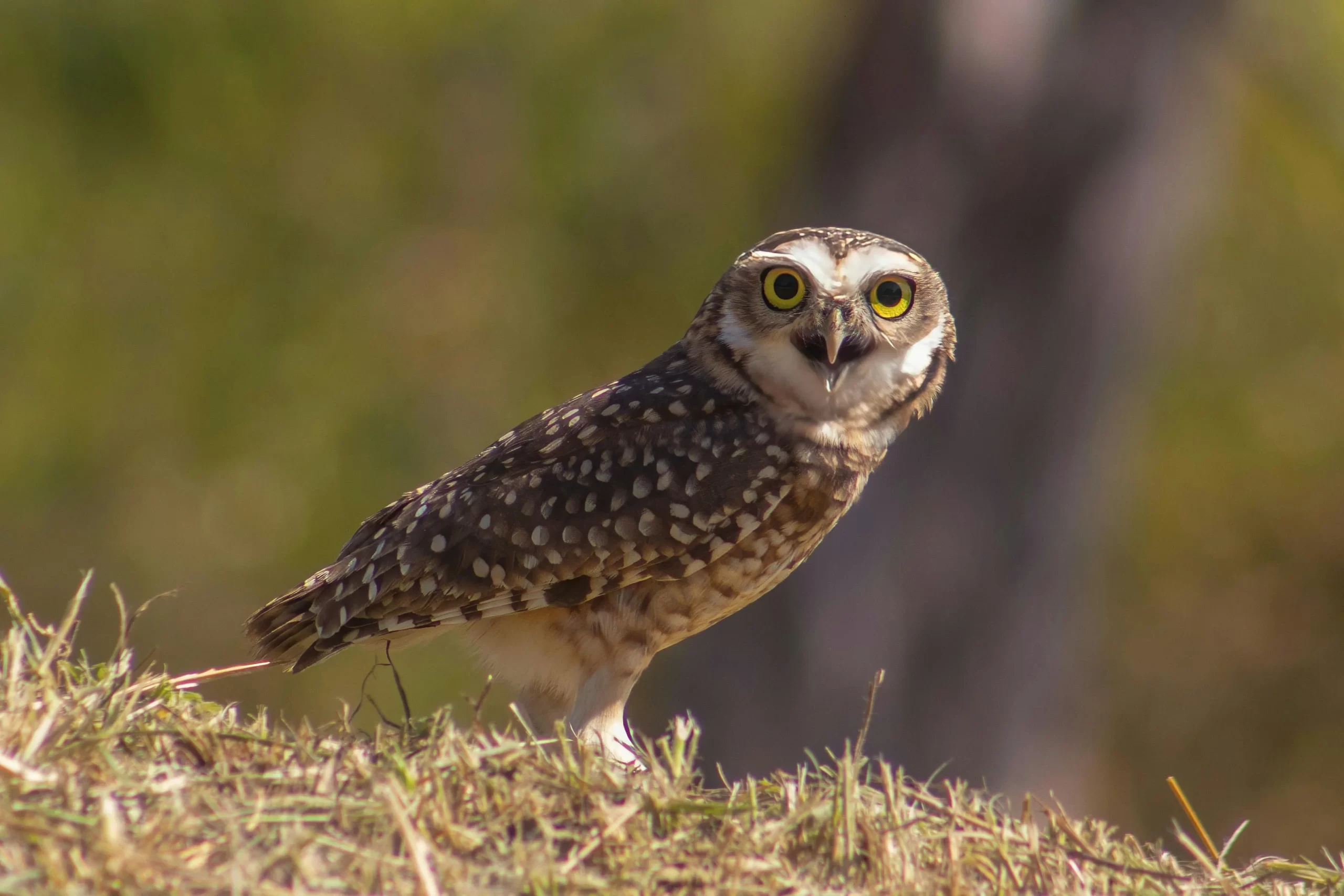Although many people flock to Florida to observe the fantastic bird diversity that can be observed in the state, not all groups of birds are more specious here than in other parts of the country. For instance, recall that hummingbirds and finches have poor diversity compared to elsewhere in the United States. It turns out Florida owls are in the same boat, but are there owls in Florida at all?
Yes! Although 6 types of owls in Florida can be observed annually in the Sunshine State, this number is lower compared to most other states. Still, 6 Florida owls is nothing to scoff at. Indeed, there is still plenty of owl excitement to be had in Florida. If you’re interested in knowing how and where to find the 6 owls of Florida, then keep reading this comprehensive guide!
Table of Contents
Types of Owls In Florida
Barn Owl
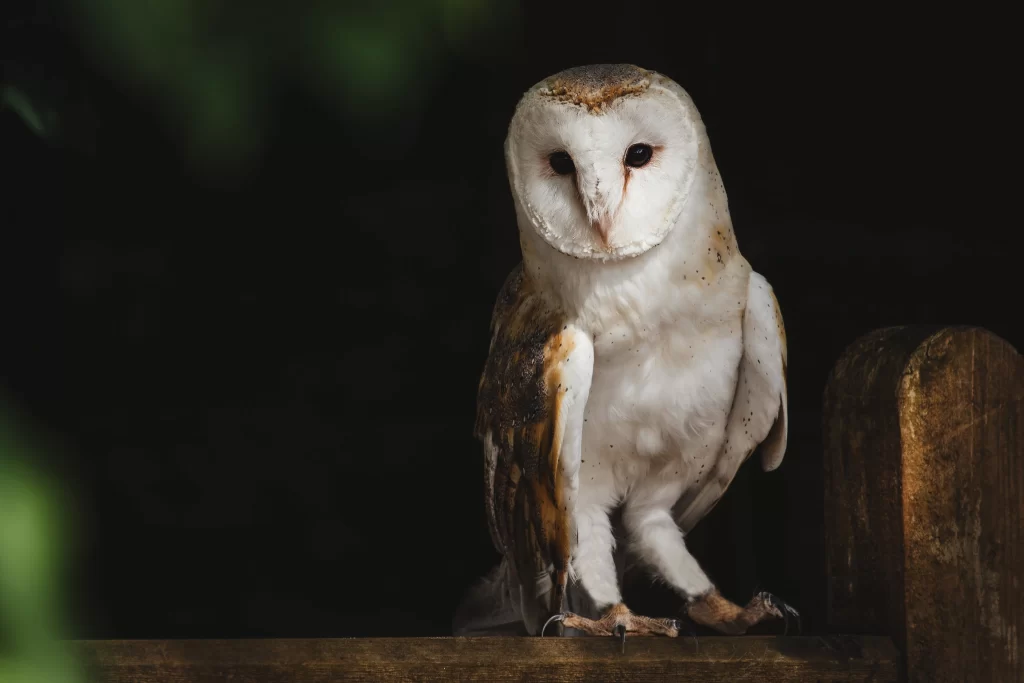
Barn Owls are uncommon Florida owl species that can be observed throughout the year in certain parts of the state. There have been more than 6,600 reports in the state as per eBird, and June through August is the time of year with the most reports.
Barn Owls are willing breeders in birdhouses, which is a big reason why summer is the time with the most observations of these uncommon Florida owls. Central and Southern Florida are the best parts of the state to look for Barn Owls in Florida, with northern Florida having significantly fewer observations.
You won’t find this species in a dense forest. Instead, look for Florida Barn Owls in open habitats such as wetlands, grasslands, and sod farms. Here, they eat substantial numbers of mice and other rodents. Hearing a shrill screech in the night is a sure sign of a Barn Owl.
Barred Owl
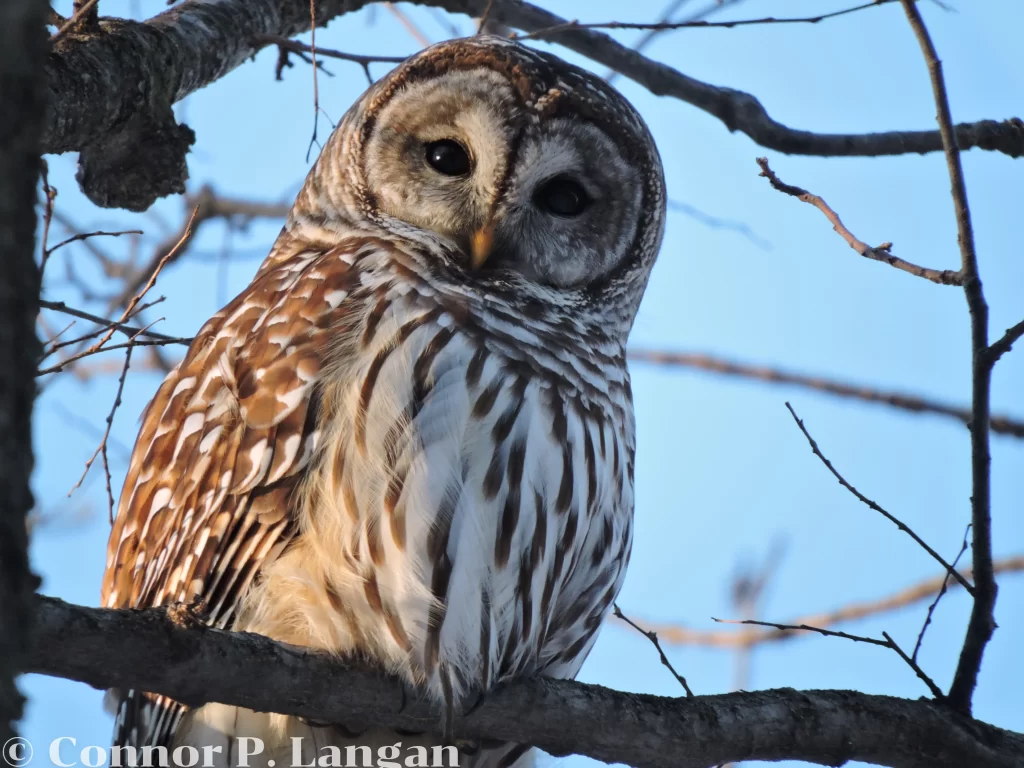
Barred Owls are the most common owls in Florida, with almost 100,000 eBird reports including these species. They are common all year, but late March through mid-April offers birders the best chance to observe them.
Barred Owls in Florida may be observed throughout the state in habitats that contain decently sized groves of trees. They thrive in parks, swamps, and forests where they find quiet roosts in which they can hide during the day from crows who would otherwise mob them.
This owl of Florida blends seamlessly into the Spanish moss that drapes from many of the trees in the state. Indeed, despite being large owls in Florida, they are easy to overlook during the day. However, they are typically the loudest owl in Florida at night.
Burrowing Owl
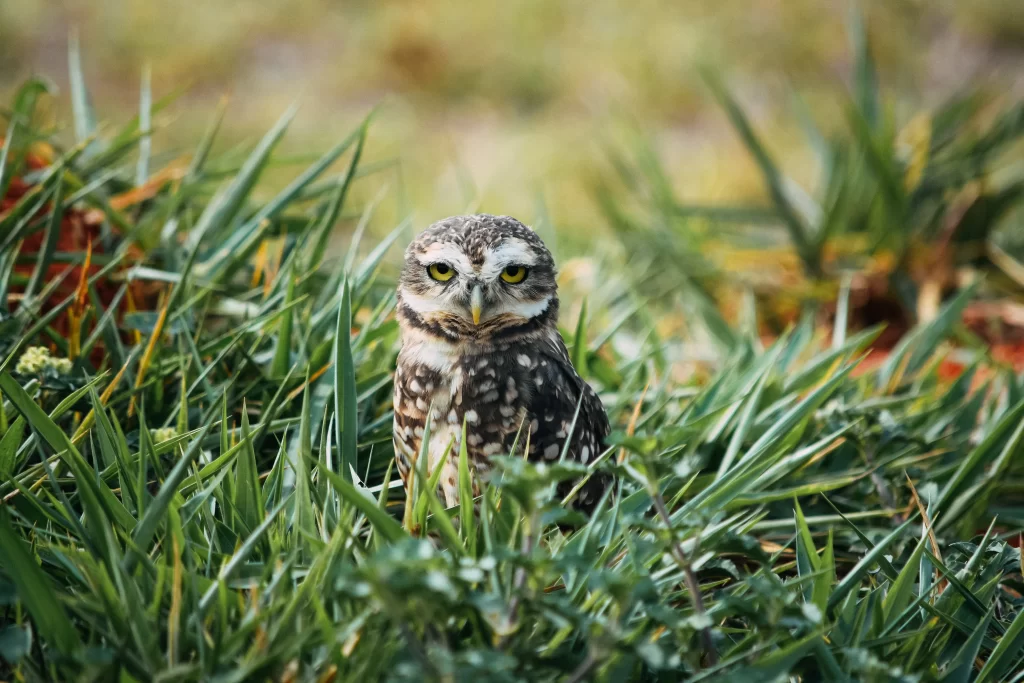
Burrowing Owls are a Florida specialty absent from the remainder of the Southeast save for southern Louisiana. Overall, more than 14,000 Burrowing Owls have been observed in the state as per eBird data.
Those who want to see Burrowing Owls in Florida should investigate locations in Central and Southern Florida, as these small Florida owls are absent from the northern portion of the state. Locations around Miami and Fort Myers are the most productive places in the state for these small owls in Florida.
Burrowing Owls are unusual in that they primarily live underground and are active during the day rather than come out at night. Here, they remain safe from the various Florida birds of prey that would love to eat them. Burrowing Owls are quite social, preferring to live in colonies with other Burrowing Owls.
Eastern Screech-Owl
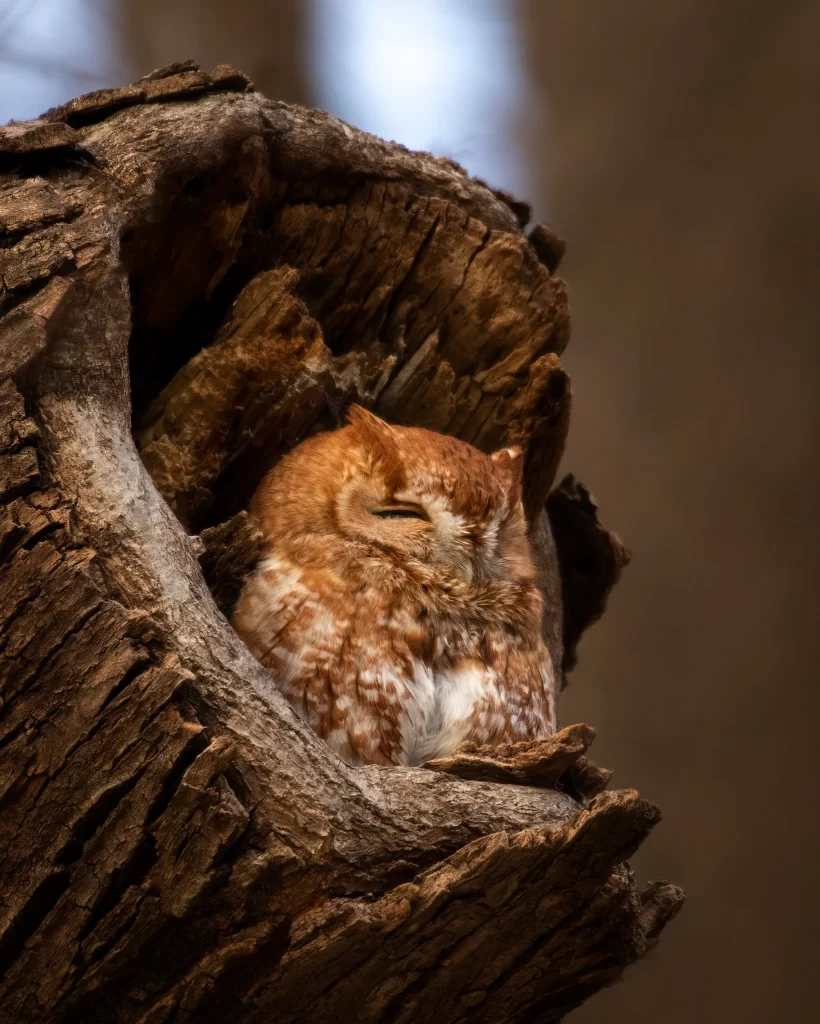
Eastern Screech-Owls are the smallest types of owls in Florida, but this does not make them any less common. Indeed, there have been about 21,000 eBird reports of these tiny Florida owl species.
Look for Eastern Screech-Owls in groves of trees of various sizes. They can flourish in residential neighborhoods, cemeteries, swamps, and forests. They are most commonly detected from late March to early May.
These small owls in Florida seek refuge in tree cavities and other nooks and crannies during the day where they remain safe from predators like hawks and other threats. Listen for their trilling calls at night.
Great Horned Owl
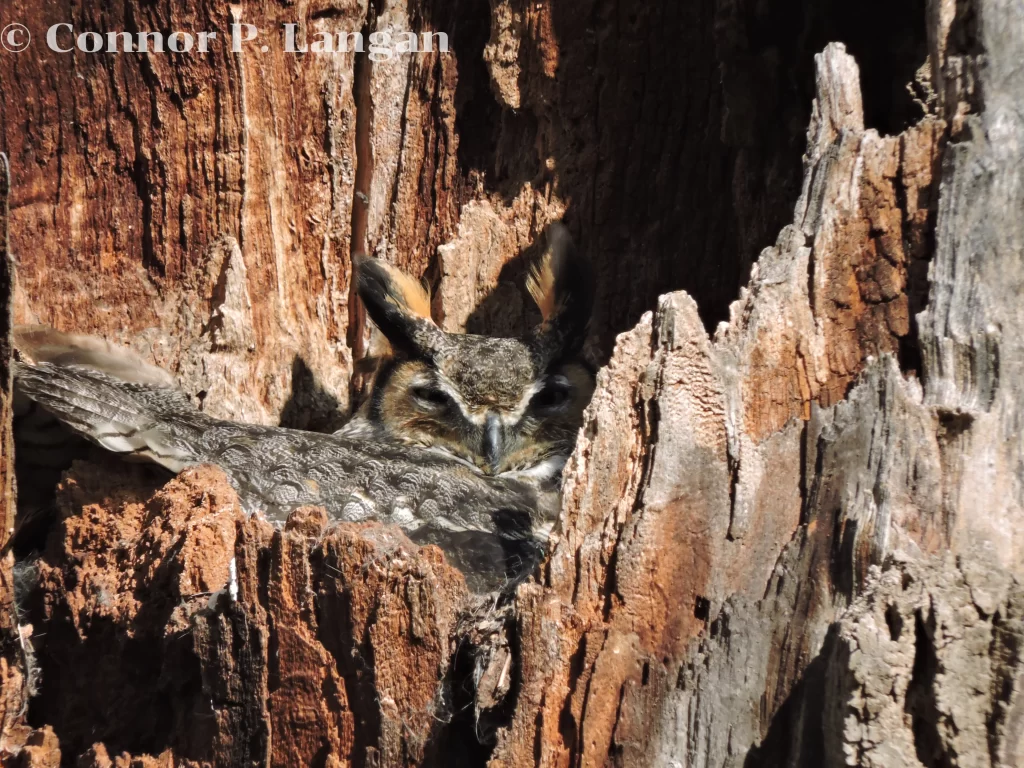
Great Horned Owls in Florida are the largest owls in the state. They also happen to be the second most common owls in Florida, with more than 46,000 observations. May through early June is the time in which they’re detected the most infrequently.
The entirety of the Sunshine State hosts Great Horned Owls. Here, these owls of Florida don’t tend to be found within extensive swamps or forests. Instead, look for them in open pine woodlands and woodlots.
Great Horned Owls do not build their own nests, instead reusing nests that were built by hawks, crows, or other large bird species. These large owls in Florida are the only regular species with ear tufts.
Short-eared Owl
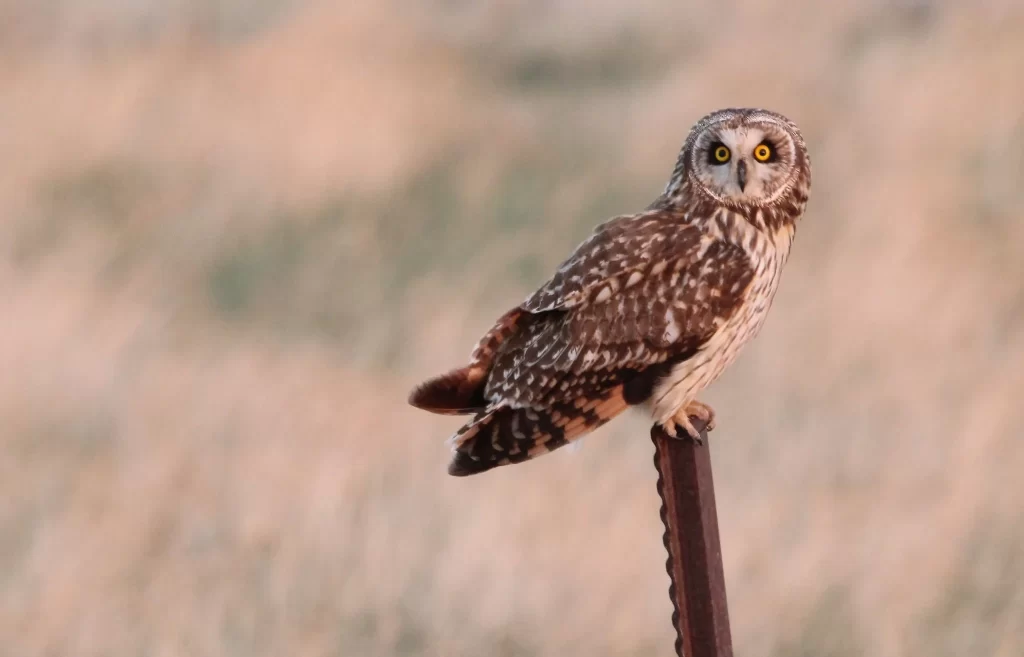
Short-eared Owls are Florida’s only migratory owl species. Indeed, these creatures can be found from November through April. They are very scarce, with only 792 observations in the state as per eBird. Still, this is far more observations than neighboring Georgia.
Short-eared Owls may pop up anywhere in Florida during the nonbreeding season, but birds in the Florida Keys are often the Antillean subspecies rather than the expected subspecies in the United States.
Open, grassy areas are the best places to find this owl of Florida. Therefore, airports, grasslands, wetlands, and coastal marshes are some of the best places to check for Short-eared Owls. Heading out at dawn or dusk will offer the best chances to view these birds.
Rare Owls In Florida
In addition to the expected types of owls in Florida, there have been several vagrant owls that have shown up in the state. In total, there have been 11 owl species observed in Florida. Let’s go over the rare Florida owls.
- Flammulated Owl: Three records: One on 4 November 1978 in Pinellas, one on 9 November 2001 in Santa Rosa, and one on 9 January 2002 in Franklin.
- Snowy Owl: 175 records from Northern Florida where this species wanders during irruption years.
- Long-eared Owl: 8 records; a very uncommon winter resident. Notable reports from the Dry Tortugas and around Lake Placid.
- Stygian Owl: A single report from 1 June 2018 in Key West.
- Northern Saw-whet Owl: 4 reports: one on 30 December 1972 in Duval, one on 26 December 2001 in Broward, one on 11 Mar 2018 in Walton, and one on 15 Apr 2024 in Franklin.

